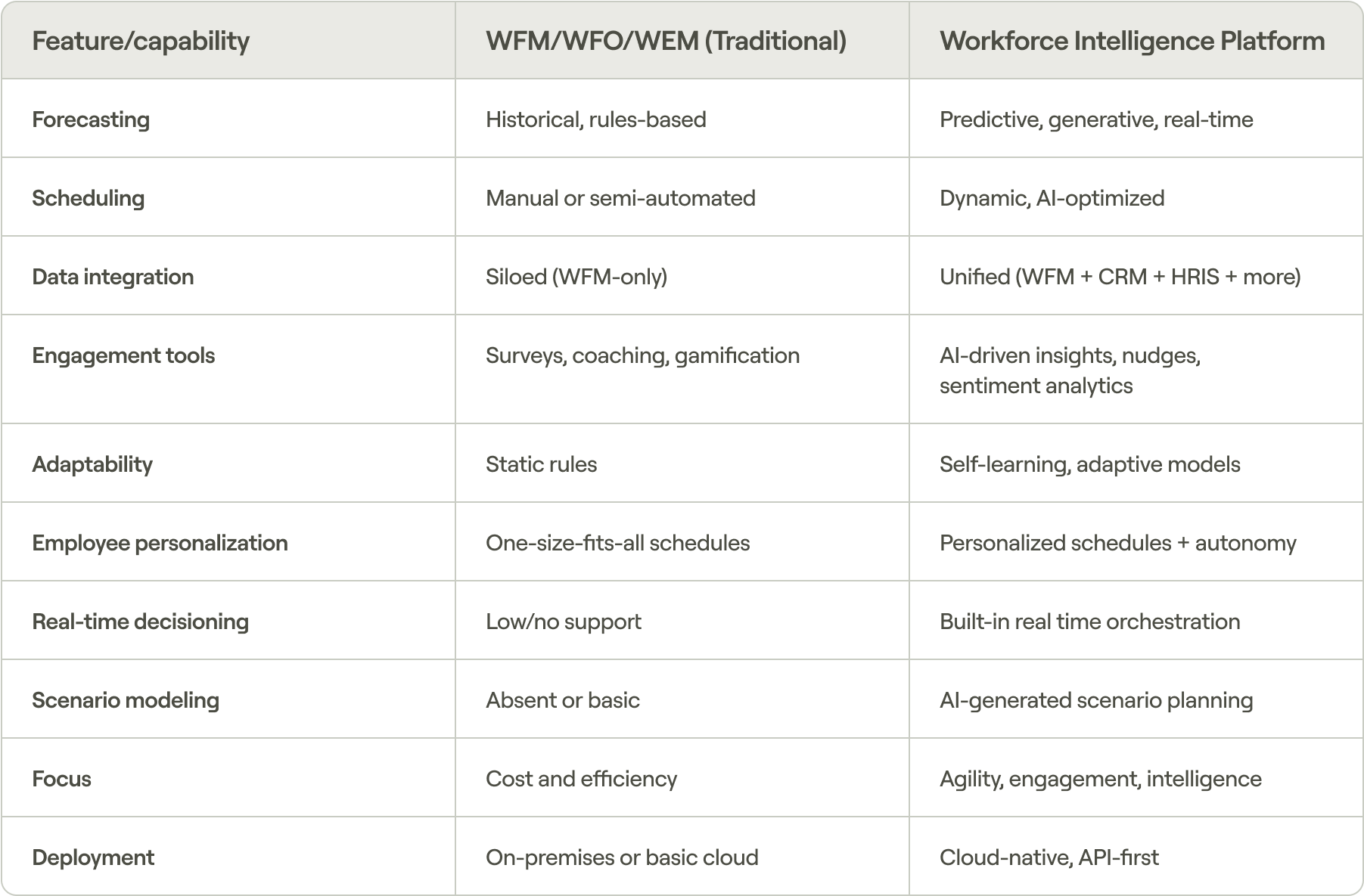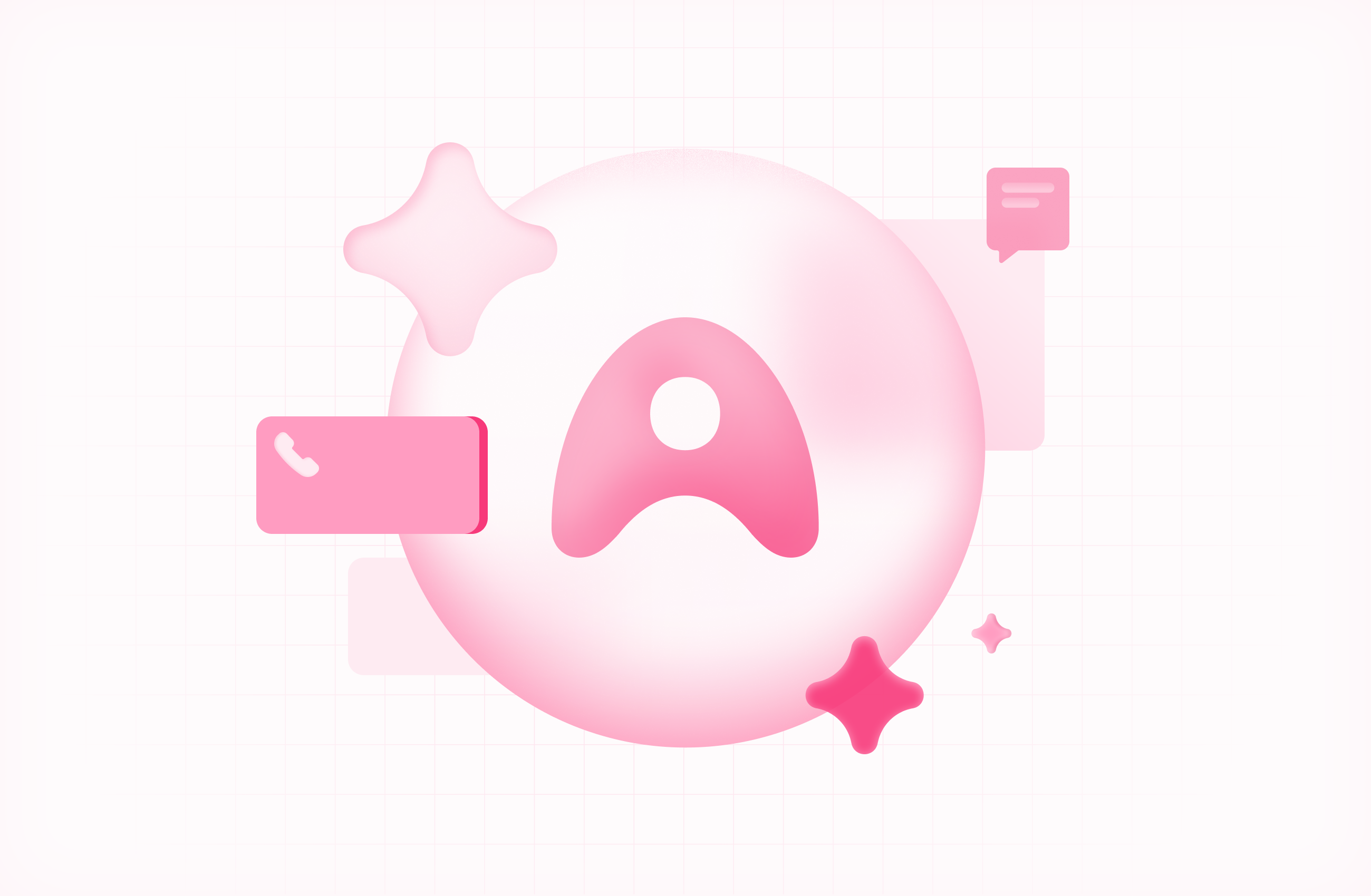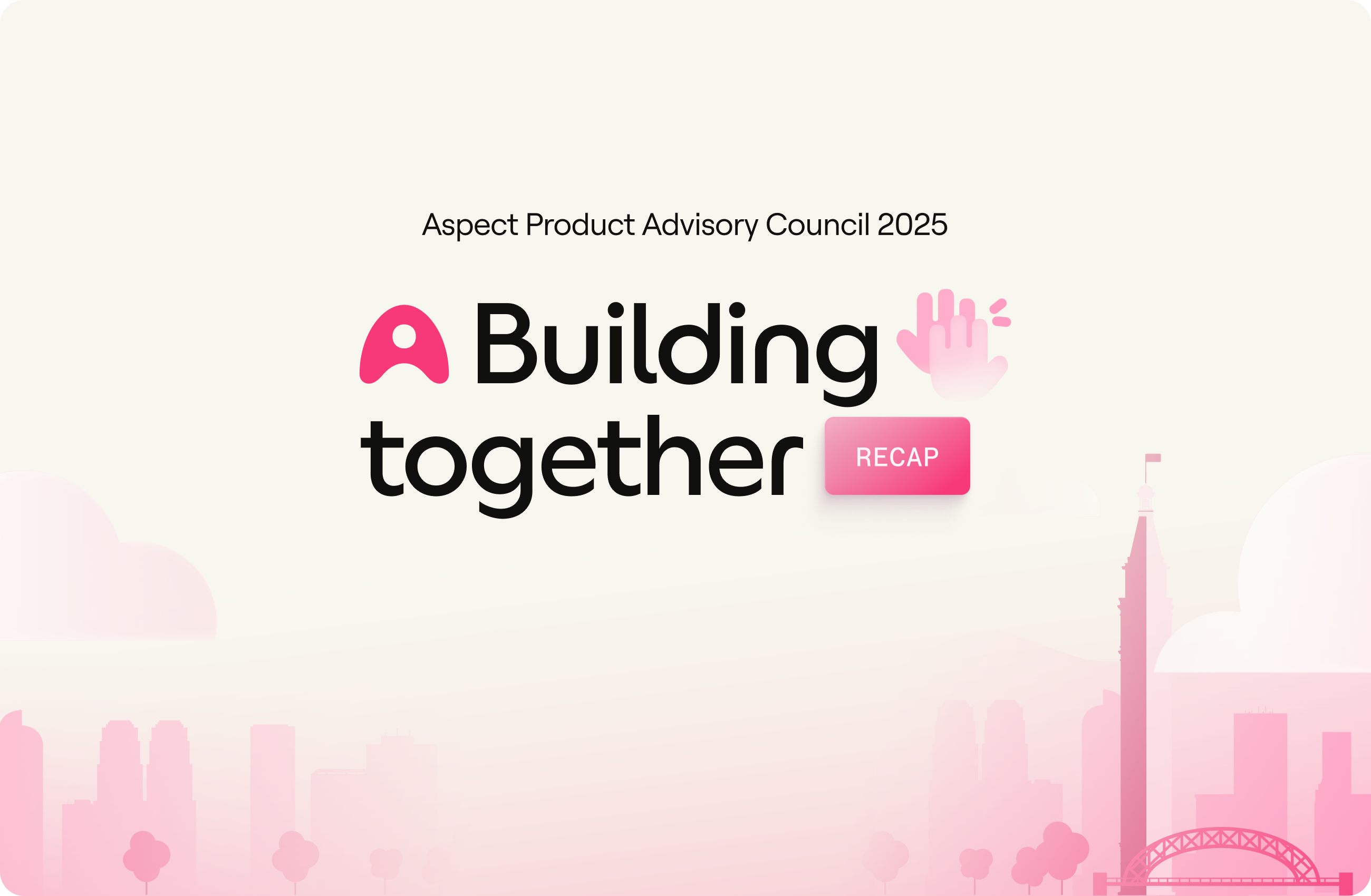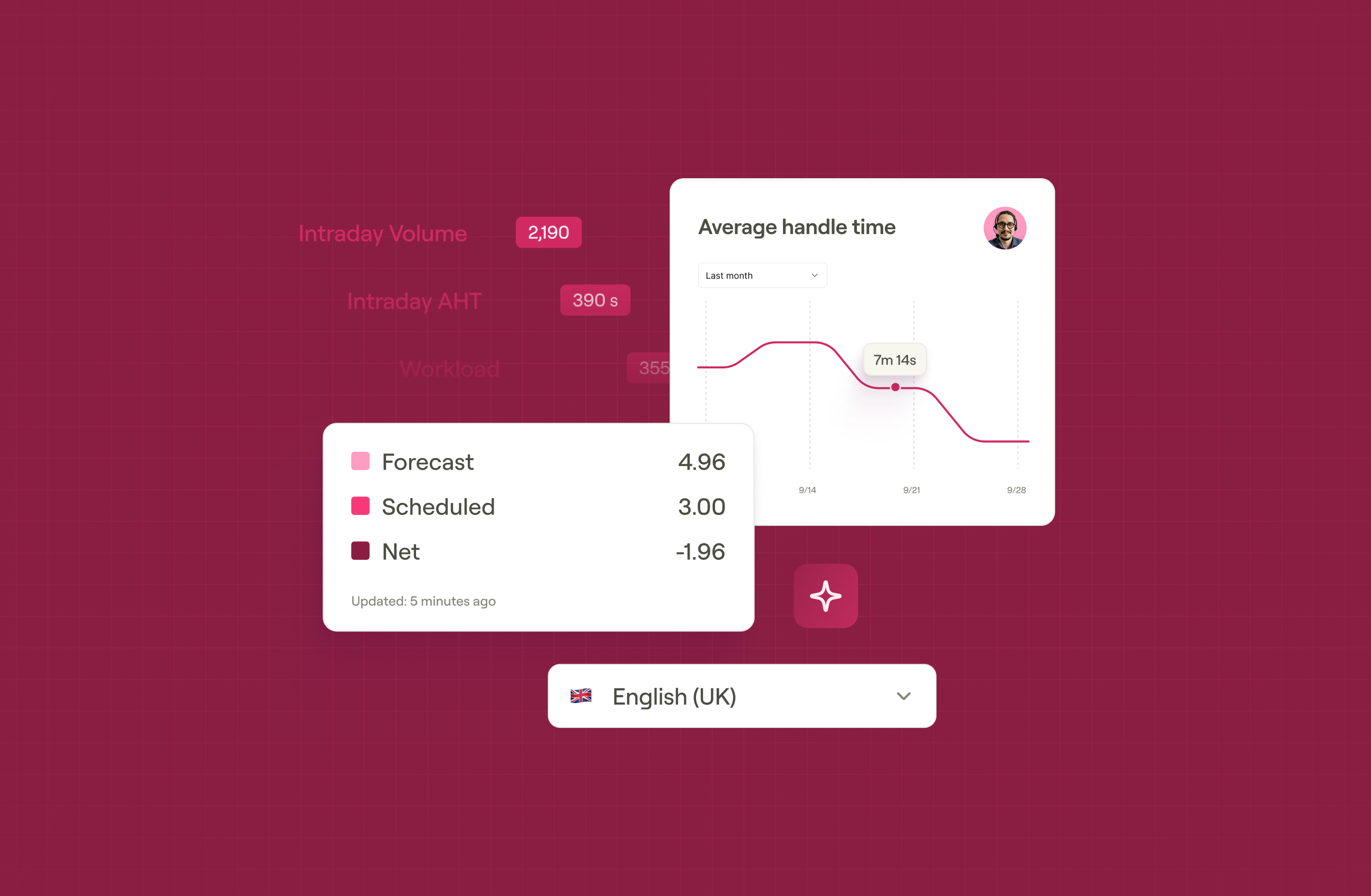The workplace has fundamentally changed. What began as a gradual shift toward digital transformation has accelerated into a complete reimagining of how, when, and where work gets done. Yet many organizations are still managing their workforce with tools and strategies that are not aligned with the modern way of working.
As leaders grapple with hybrid work models, AI-augmented customer interactions, and an increasingly complex talent landscape, one thing has become clear: traditional workforce engagement management (WEM) approaches are no longer sufficient. The future belongs to organizations that can transform raw workforce data into strategic intelligence…workforce intelligence.
The convergence of AI and human potential
We're witnessing a pivotal moment in workforce management. AI and automation are increasingly handling routine customer requests, fundamentally changing the nature of human work. Rather than replacing human workers, this shift is empowering them to take on more impactful, strategic roles. This is enabling them to focus on higher-value, human-centric work that requires advanced problem solving, emotional intelligence, and creative thinking.
This evolution presents both opportunities and challenges. Organizations need employees with sophisticated skillsets, which means recruiting, developing, and retaining top talent has never been more critical. Yet traditional workforce management treats people as interchangeable resources rather than strategic assets.

From reactive management to predictive intelligence
Traditional WEM operates in reactive mode—responding to staffing gaps, addressing performance issues after they occur, and making scheduling decisions based on historical patterns that may no longer apply. This approach worked when business environments were more predictable, but today's dynamic landscape demands a different strategy.
Workforce intelligence represents a fundamental shift from reactive to predictive management. Instead of waiting for problems to surface, organizations can identify patterns and trends that reveal hidden opportunities and potential issues before they impact operations. This isn't just about better scheduling, it's about creating a strategic advantage through deeper understanding of workforce dynamics.
Consider the difference between knowing that you were understaffed last Tuesday and predicting that you'll need additional coverage next Tuesday based on emerging demand patterns, employee preferences, and external factors. The latter enables proactive decision-making that improves both operational efficiency and employee satisfaction.
The three pillars of workforce intelligence
Effective workforce intelligence operates on three foundational pillars that work together to create a sustainable competitive advantage:
1. Visibility:
Revealing hidden patterns, such as team rhythms, demand signals, and high performers, that traditional metrics overlook. This insight helps leaders understand true performance drivers and early warning signs, enabling better-informed decisions.
2. Intelligence:
Converting raw data into actionable insights by analyzing what’s happening, why, and what’s likely to occur. Contextual understanding of employee preferences and external factors guides optimal strategies, increasing decision confidence.
3. Adaptation:
Continuously learning and improving through accumulated knowledge from decisions and outcomes. This adaptive system refines its insights over time, maintaining value despite employee turnover and evolving conditions.
The workforce intelligence advantage
Imagine a world where your workforce operations run like a perfectly orchestrated symphony. Where managers spend their time developing people instead of fighting fires. Where employees have meaningful work that leverages their unique strengths, and where business results improve naturally because everything is aligned.
This is the world workforce intelligence makes possible.
Picture managers who don’t just schedule shifts—they choreograph human potential. They can see which team combinations will spark innovation, predict when someone might need support before burnout occurs, and create work environments where people genuinely want to contribute their best.
Envision employees who don’t just complete tasks—they have true agency in how work gets done. They work in roles that match their strengths and have clear visibility into how their contribution drives results.
In this future, workforce operations become a source of competitive advantage rather than operational overhead. Every scheduling decision, every performance insight, every adjustment builds on the last, creating systems that get smarter and more effective over time.
This evolution is beginning now. The organizations that embrace this vision will be more efficient and will help create the future of work itself. They’ll prove that when you combine human creativity with intelligent systems, you improve operations and unlock possibilities no one saw coming.
This is your invitation to join them. To move beyond managing people as resources and start orchestrating them as the strategic advantage they truly are. To build a better workforce and a better way of working.
The future belongs to organizations ready to reimagine what’s possible when human potential meets intelligent systems. Where will your organization fit in this new world?
Join the conversation over on LinkedIn. How do you define workforce intelligence and how do you see it impacting your organization?









